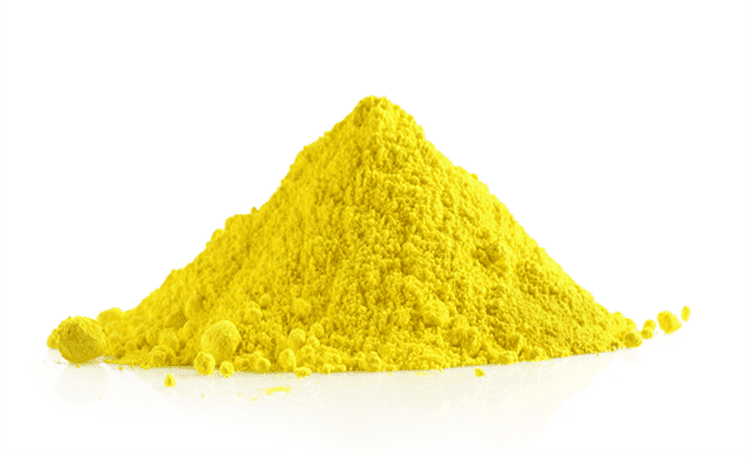BACKGROUND
Ingredient Type: Constituent (natural digestive salt)
Also Known As: Conjugated bile acid, Bile acid, Secondary bile acid, Trihydroxy conjugate, Dihydroxy conjugate, Ox bile, Oxgal

Bile salts are polar cholesterol derivatives that are synthesized in specialized liver cells known as hepatocytes. Because at physiological pH these molecules are present as anions, the terms bile acid and bile salt are often used synonymously. Once made, bile salts are stored in the gallbladder, secreted into the duodenum, and then, for the most part, reabsorbed in the ileum (1). Reabsorbed bile salts are returned to the liver where they are recycled for further use.
Bile salts play an essential role in lipid absorption and transport. Because bile salts are amphipathic (having both a water and fat-soluble region) they can bind to fats and oils, and emulsify them in the water-based environment of the gut (2). Once emulsified, these fats and oils are more easily accessed and broken down by digestive enzymes. Following ‘digestion’ the bile acids then transport the broken down fats to the intestinal lining where they can be absorbed.
Bile salts are also important in cholesterol regulation. Bile salts, which are made from cholesterol, are typically recycled by the body. When cholesterol levels are high, however, bile salt reabsorption through the gut can be reduced, allowing for excretion of these salts in the feces. The liver then uses excess cholesterol to synthesized more bile salts to compensate for the loss of those that were excreted (3).
TRADITIONAL USES
Bile salt is used in health supplements today to support normal cholesterol levels in the body. It is believed that supplemented bile salts are not absorbed through the gut and that excretion of these salts stimulates the liver to use cholesterol to make more bile salts.
WHAT DOES SCIENCE TELL US?
Bile salts:
- Are the major route for the elimination of cholesterol from the human body (1).
- Are strong surfactants (4).
- Facilitate the absorption of fat-soluble vitamins by the intestinal mucosa (5).
- Allow the formation of tiny lipid droplets to increase the surface area for lipase activity (mainly pancreatic lipase) (6).
- Facilitate the formation of mixed micelles with phospholipids which prevent the precipitation of cholesterol (7).
- Modulate the secretion of pancreatic enzymes and cholecystokinin (8).
- Have potent antimicrobial activity, mainly against gram-positive bacteria (9).
- Play an important role in the prevention of bacterial overgrowth and the regulation of gut microbiota composition (8).
- Have a regulatory role in the control of energy metabolism, in particular, the way the liver handles glucose (9).
Even More:
Coming Soon
SAFETY
Bile acids or bile salts in Ox bile supplements are considered safe to consume, according to the U.S. Food and Drug Administration. Although they may be unnecessary if your digestive health is good, they pose no specific danger (10).
Side-Effects:
Supplementation with bile salts has been associated with diarrhea in some people. This can be attributed to the fact that unabsorbed bile salts go directly into the colon and acts as a laxative. Some people have found diarrhea related to bile salt supplementation to be painful. Lower dosages are recommended for people who experience this side-effect (11).
REFERENCES
- Tazzini N. Bile salts: definition, functions, enterohepatic circulation, synthesis. Tuscany Diet Website. http://www.tuscany-diet.net/2016/08/14/bile-salts-definition-function-synthesis/. Accessed March 2, 2018.
- Cowen AE and Campbell CB. Bile salt metabolism I the physiology of bile salts. Aust N Z J Med. 1977;7(6):579-586.
- Cloe A. Action of bile salts. LiveStrong.com article. https://www.livestrong.com/article/118474-action-bile-salts/. Accessed March 2, 2018.
- Chiang JYL. Bile acids: regulation of synthesis. J Lipid Res. 2009;50(10):1955-1966. doi:10.1194/jlr.R900010-JLR200.
- Gropper SS and Smith JL. Advanced nutrition and human metabolism 6th Edition. Cengage Learning. 2012.
- Monte MJ, Marin JJG, Antelo A, Vazquez-Tato J. Bile acids: chemistry, physiology, and pathophysiology. World J Gastroenterol. 2009;15(7):804-816. doi:10.3748/wjg.15.804.
- Rawn JD. Biochimica. Mc Graw-Hill, Neil Patterson Publishers. 1990.
- Rosenthal MD and Glew RH. Medical biochemistry – human metabolism in health and disease. John Wiley J. & Sons, Inc. 2009.
- Sundaram SS, Bove KE, Lovell MA and Sokol RJ. Mechanisms of disease: inborn errors of bile acid synthesis. Nat Clin Pract Gastroenterol Hepatol. 2008;5(8):456-468. doi:10.1038/ncpgasthep1179.
- Annigan J. Beef bile supplement. Livestrong.com. https://www.livestrong.com/article/549878-beef-bile-supplement/. Accessed March 2, 2018.
- Yoffe L. When used with other cholesterol drugs, this medication can lower cholesterol by more than 40 percent. EverydayHealth Website. https://www.everydayhealth.com/high-cholesterol/treatment/bile-acid-sequestrants/. Accessed March 2, 2018.









